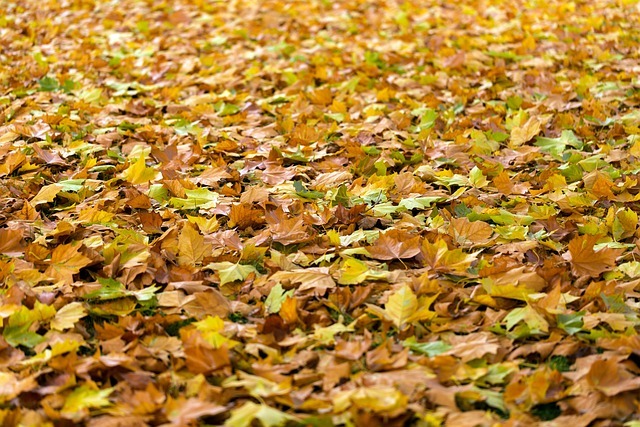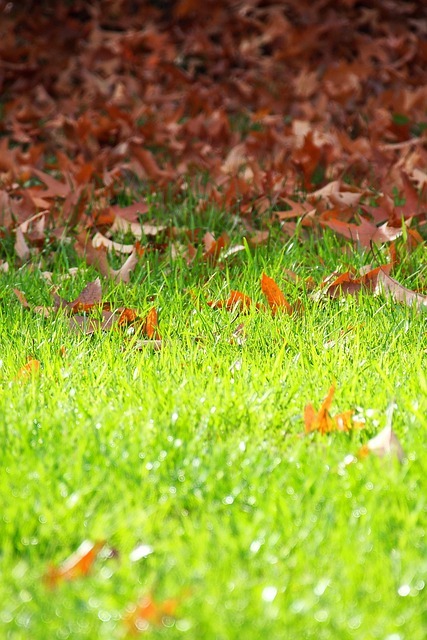Here’s the simple answer: Light to moderate leaf cover does not prevent fertilizer from penetrating the lawn.
Why Fertilizer Still Works: The Science Explained Simply
- Granular fertilizer particles fall between blades and settle into the canopy. Even if leaves are present, granules naturally roll off or slide between them.
- Rainfall or irrigation dissolves the product, moving nutrients through leaf layers and into the root zone.
- Leaves are porous and organic, not a barrier. Water easily passes through them — and so does fertilizer.
- Turfgrass crowns (the growing point of the plant) remain accessible, so nutrients still get to the parts of the grass that matter.
Unless your lawn is buried under a dense, wet, matted layer of leaves several inches thick, fertilizer absorption is not negatively impacted.
When Leaf Cleanup Does Matter
While leaves don’t block fertilizer effectiveness, leaving thick piles over the lawn for long periods can cause issues unrelated to fertilization. Heavy leaf accumulation may:

- Smother turf
- Reduce airflow
- Create ideal conditions for turf disease
- Kill sections of grass over winter
- Invite rodents or pests to nest
A Good Rule of Thumb from MissionGreen
If you can still see the grass, the fertilizer will still work. If the leaves form a thick blanket where you can’t see the turf, it’s time for cleanup.
How MissionGreen Technicians Handle Leafy Lawns During Fall Applications
Our certified turf specialists are trained to adjust application techniques depending on leaf conditions. Here’s how we ensure the best possible result:
- We assess leaf density before treating
- We apply fertilizer in a targeted manner to ensure canopy penetration
- We avoid heavily blanketed areas and may notify you if cleanup is needed
- We use weather patterns strategically, timing applications before rain or mild conditions
- We document recommendations so you know exactly how to support the treatment
Your lawn is never treated blindly. Everything we do is intentional and agronomically sound.
Best Homeowner Practices for Leaves + Fall Fertilizer
To complement your MissionGreen fall application, here’s what you can do:

1. Keep Up with Leaf Removal
Periodic raking or blowing is perfect. You don’t need a spotless lawn — just avoid heavy buildup.
2. Mulch Whenever Possible
Mulching leaves with your mower returns organic matter and micronutrients to the soil. It’s good for turf and good for the environment.
3. Don’t Delay Fall Fertilization
Waiting until leaves are gone usually means missing the critical nutrient-uptake window. Turf slows dramatically once soil temperatures drop below 50°F.
4. Water Lightly After Application
A brief watering or relying on natural rainfall helps nutrients move into the soil profile.
Why MissionGreen Services Prioritizes Fall Nutrition
Fall is when your lawn builds the foundation for:
- A stronger, greener spring
- Better color retention into November
- Increased drought tolerance
- A deeper, more resilient root system
Skipping fall fertilization because of leaves is a costly mistake that sets your lawn back for months.
MissionGreen Services uses premium, slow-release fertilizers specifically designed to maximize late-season nutrient uptake and strengthen your turf before winter.
Final Takeaway
Leaves on your lawn in the fall DO NOT interfere with fertilizer applications.
As long as the grass is visible and not buried under a thick, matted layer, your fall treatment will work exactly as intended — feeding the roots, repairing summer damage, and preparing your lawn for a stronger, greener spring.
Let the leaves fall. MissionGreen Services will take care of the rest!



